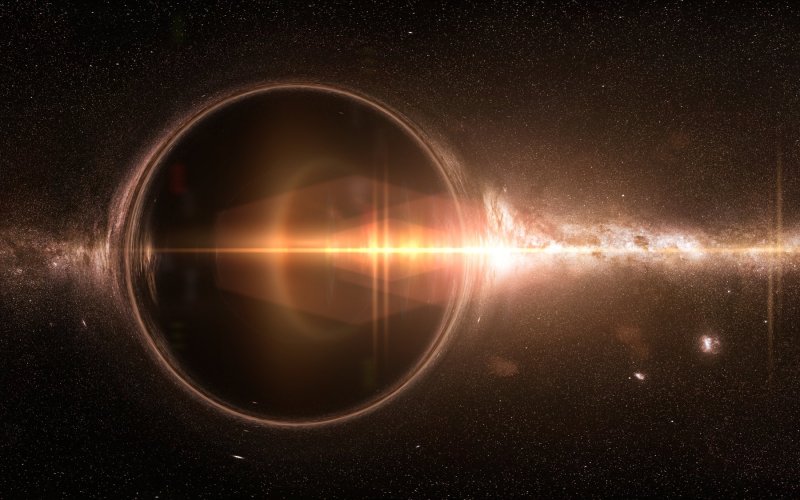According to Einstein’s theory of relativity, an object that moves very fast gains mass. So if I run really fast, will I turn into a black hole?
The term “black hole” was first used in 1967 by Frank Wheeler to describe a cosmic body, which until then had been called a “black star” or a “gravitationally completely collapsed body”. It is a bizarre object that is so massive and dense that not even light can escape from it. Its existence results from Einstein's theories. But as early as 1783, the geologist John Michell calculated from Newton’s gravitational equations that a body so massive that the escape velocity at its surface would be greater than the speed of light could exist. Such a body would be completely invisible to the outside world.
The existence of black holes has already been proven. They exist as collapsed stars or in the centres of galaxies. Even our galaxy has one supermassive black hole at its centre.
Theoretically, in order for a black hole to form, enough matter would have to be gathered in one place. The mass limit for a black hole is called the Chandrasekhar limit. It is equal to 2.765 × 1030 kg, or 1.44 solar masses. The object then collapses under its own weight into the black hole.
The primordial mass should not radiate anything, i.e. it should be cold, because the radiation pressure would counteract the gravitational collapse. Much more massive objects can exist and not turn into a black hole just because of the radiation pressure given off by fusion reactions.
A man cannot turn into a black hole because his mass of about seventy kilograms is very small compared to almost one and a half the mass of the Sun unless his mass increases rapidly and this is where Einstein’s theory of relativity comes in.
In the everyday world we inhabit, where things are mostly small, light and slow, if a car wants to accelerate by one kilometre per hour, the engine has to work with exactly the same force whether the car is going slow or fast. In the world of relativistic physics, which describes things in cosmic dimensions and at speeds approaching the speed of light, this is not true. The more the speed of an object approaches the speed of light, the harder we have to work to accelerate it even faster. It’s almost as if the object was getting heavier as it got faster.
To explain this paradox, we can assign a so-called relativistic mass to the object. The faster an object moves, the higher its relativistic mass. Eventually, if it reaches the speed of light, its mass will be infinite. It will take an infinite amount of energy to accelerate that much, which is why no massive object can move at the speed of light. This privilege is reserved for photons, particles with zero rest mass.
Other strange things are happening to the extremely fast object. It seems to be shrinking in length — we call this length contraction. Its perception of time is also slowing down for which we use the term time dilation.
If we start from these equations and let a man run at a speed very close to the speed of light, his relativistic mass will certainly exceed the Chandrasekhar limit. He should collapse into a black hole, but he won’t. The change in mass, length and the flow of time is a matter of the observer. The perception of velocity is always a matter of the system from which the moving object is observed. Hence the word “relative” in the title of Einstein’s theory.
This is valid in our world as well. When we stand on a platform and watch the train go by, we see it going fast. But if we are sitting in that train, we do not perceive any speed and it seems to us that we are not moving at all. If a dog runs alongside the train on the platform, the person standing on the platform will see that the dog is running slower than the train. The person sitting on the train will perceive that the dog is backing up, and that the person standing on the platform is backing up even faster.
It is exactly the same at speeds just a hair below the speed of light. If a spaceship whizzes past us at sublight speed, its passengers will have the feeling that it is not they, but you who are whizzing past at sublight speed, but in the opposite direction. If you observe other strange phenomena such as a shortening of the length of the spacecraft, be assured that the astronauts are observing the same shortening in you.
Every now and then, a cosmic particle hurtles past the Earth at close to the speed of light. From its perspective, it is the Earth that is hurtling incredibly fast, and if it were true that extremely fast objects gain mass, the Earth should collapse into a black hole after each such passage. Which it apparently isn’t.
The answer to the question is that no matter how fast you run, you will not turn into a black hole. Running just doesn’t make you bigger.
Want to ask something?
Send us an e-mail with the subject “Physics mysteries” to the address:
We can't wait to tackle your interesting questions!





